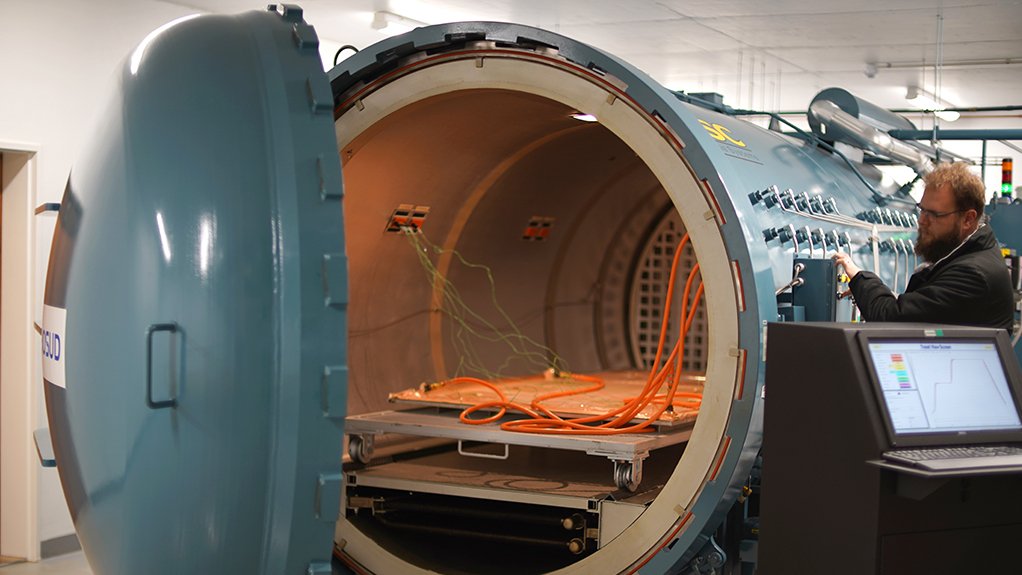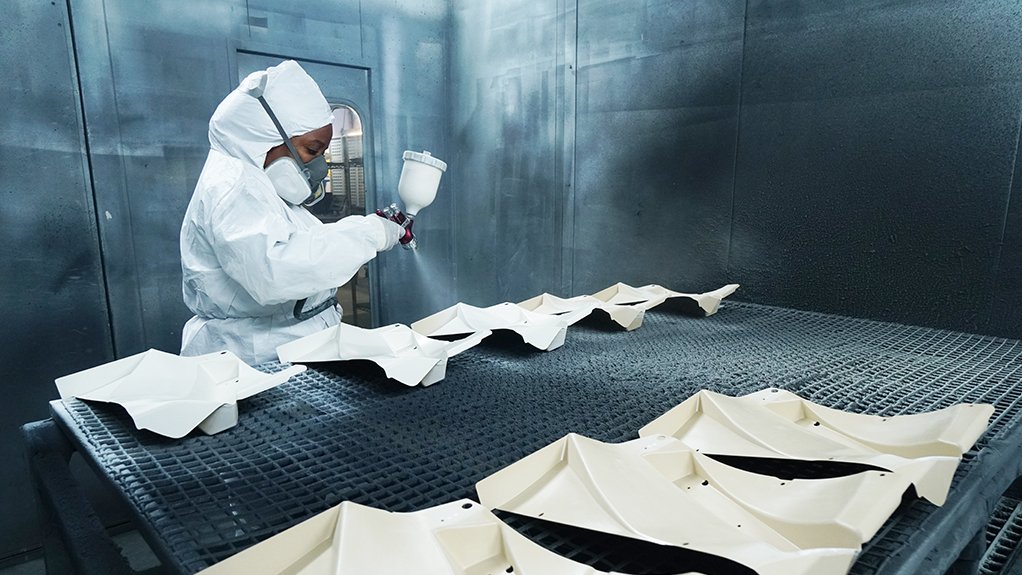Jobs potential seen in aerospace manufacturing




JOHAN STEYN Adherence to international quality, safety, design and manufacturing standards will lead to qualification and certification as part of international supply chains
TECHNICAL TONIC The aerospace manufacturing sector uses advanced manufacturing technologies and processes
QUALITY WORK Broader use of advanced manufacturing methods in industries can be stimulated by capacitating public organisations and using lessons from the aerospace industry
Previously disadvantaged individuals can comprise up to 90% of the main beneficiaries and startup business owners as part of the private-public growth initiative (PPGI) which aims to stimulate the expansion and development of the aerospace manufacturing sector.
Further, at least 30% of the exports produced by this sector can be produced by black-owned companies after the five-year initiative, says industry body Commercial Aerospace Manufacturing Association of South Africa (Camasa).
The PPGI strategic document is based on an industry study to base the five-year development goals on facts and was developed by Camasa and Aerosud South Africa, Adept Airmotive, Enceladus, National Aerospace Centre and i2B.
Local content in manufactured aviation components and equipment for export is higher than 40% and even higher for space-related locally manufactured equipment, the PPGI document states.
“Significant growth is anticipated in the aerospace manufacturing industry globally, as well as being sustained into the future,” the document says.
When combined with components and equipment manufactured for space missions, the export value increases to about R9-billion a year and an export propensity of about 70%. Taking into account that an estimated 2 600 small satellites will be launched between 2018 and 2028, the aerospace industry has good growth prospects.
This outlook, coupled with the fact that the aerospace manufacturing industry using high technology and advanced manufacturing processes that are forecast to be core elements of the Fourth Industrial Revolution (4IR), means that the role the industry plays within the broader manufacturing and industrial sectors can also be expanded, if it is linked to government development initiatives and incentives.
“Focused investments and incentives in the nucleus of the sector can help to unlock growth and lead to opportunities to create small businesses that can then be incubated and contribute to growth, transformation, skills development and sustainable employment creation,” according to the document.
Key to achieving these objectives is to develop and establish capacity in all stakeholders through the creation of a public–private special purpose vehicle, which will also draw on the most successful elements of industrial incentives programmes such as the future production technologies programme under the National Technologies Implementation Platform (NTIP) and the Aerospace Industry Support Initiative.
Additionally, capacity to execute the industrial development scheme is essential so that it can be deployed into all industrial aerospace subsectors and geographical areas to stimulate investment and development.
An effective, broad aerospace development initiative will require a multi- departmental liaison office to coordinate and align all the existing policies, funds and support mechanisms across government departments.
Future Skills
The current training regimes in the aerospace manufacturing sector focus on current advanced manufacturing technologies and processes, as well as future technologies and processes that are expected to form part of 4IR.
“Training according to the exacting standards of the aerospace manufacturing industry can be accomplished through partnerships with education institutions, including aerospace training schools, universities, technical and vocational education and training colleges, and universities of technology.”
Training and education partnerships should also tap existing industrial support organisations and initiatives, such as the Intsimbi Future Production Technologies Initiative, which falls under the NTIP.
The focus of training must be on internationally recognised curricula in quality, safety, design and manufacturing technologies. This will lead to the qualification and certification of personnel, processes, facilities and products for export and global markets.
To round out the PPGI, industry, government and stakeholders at the highest level must pursue focused and deliberate engagement with original- equipment manufacturers. This will help to focus efforts on meaningful investments and collaborative programmes aimed at supporting the growth strategy.
A close working relationship among all local stakeholders is fundamental to ensuring the success of the PPGI and the sustained growth of the aerospace manufacturing sector, says Camasa.
Comments
Press Office
Announcements
What's On
Subscribe to improve your user experience...
Option 1 (equivalent of R125 a month):
Receive a weekly copy of Creamer Media's Engineering News & Mining Weekly magazine
(print copy for those in South Africa and e-magazine for those outside of South Africa)
Receive daily email newsletters
Access to full search results
Access archive of magazine back copies
Access to Projects in Progress
Access to ONE Research Report of your choice in PDF format
Option 2 (equivalent of R375 a month):
All benefits from Option 1
PLUS
Access to Creamer Media's Research Channel Africa for ALL Research Reports, in PDF format, on various industrial and mining sectors
including Electricity; Water; Energy Transition; Hydrogen; Roads, Rail and Ports; Coal; Gold; Platinum; Battery Metals; etc.
Already a subscriber?
Forgotten your password?
Receive weekly copy of Creamer Media's Engineering News & Mining Weekly magazine (print copy for those in South Africa and e-magazine for those outside of South Africa)
➕
Recieve daily email newsletters
➕
Access to full search results
➕
Access archive of magazine back copies
➕
Access to Projects in Progress
➕
Access to ONE Research Report of your choice in PDF format
RESEARCH CHANNEL AFRICA
R4500 (equivalent of R375 a month)
SUBSCRIBEAll benefits from Option 1
➕
Access to Creamer Media's Research Channel Africa for ALL Research Reports on various industrial and mining sectors, in PDF format, including on:
Electricity
➕
Water
➕
Energy Transition
➕
Hydrogen
➕
Roads, Rail and Ports
➕
Coal
➕
Gold
➕
Platinum
➕
Battery Metals
➕
etc.
Receive all benefits from Option 1 or Option 2 delivered to numerous people at your company
➕
Multiple User names and Passwords for simultaneous log-ins
➕
Intranet integration access to all in your organisation




















